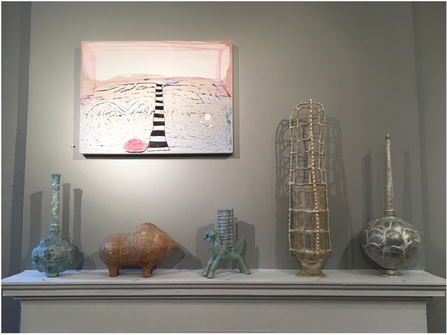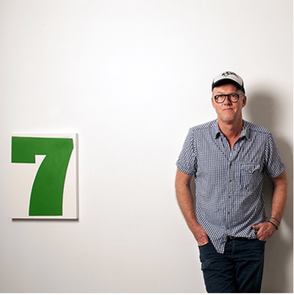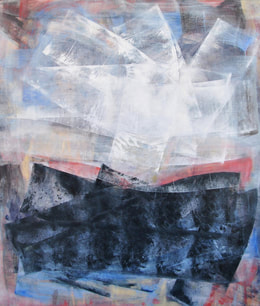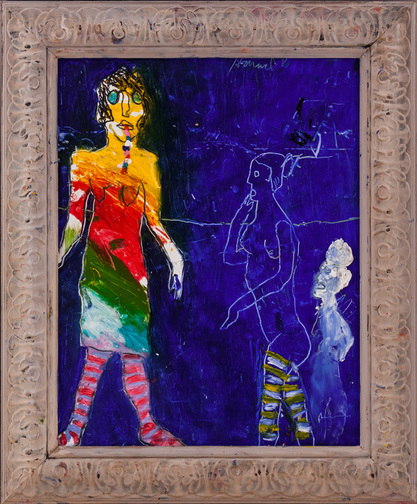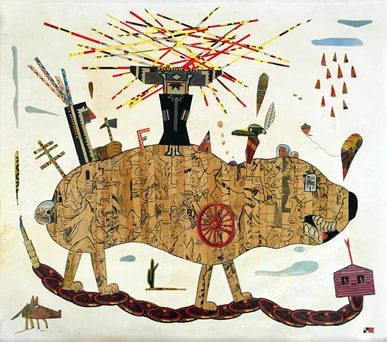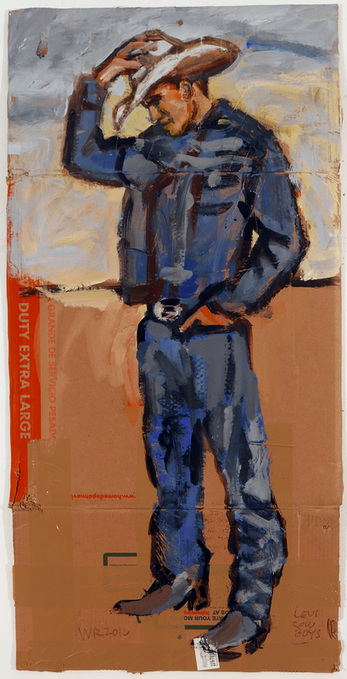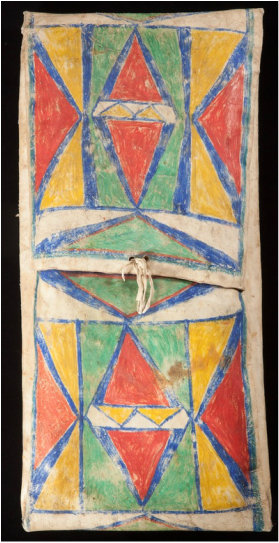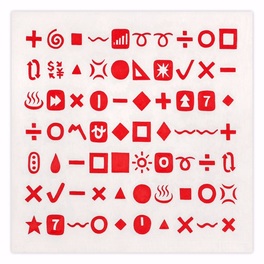PRESS and MEDIA
|
Watch the artcritical talk 17 Years of The Review Panel Conversations on INTERSECTIONS and three other current exhibitions in New York David Brody, Lilly Wei and Alexi Worth discuss Intersections: Ron Baron and Sarah Walker Featuring artcritical contributors in conversation with David Cohen and an introduction from Phong H. Bui |
|
|
INTERIOR DESIGN magazine: Q&A: Arizona Transplant Matt Magee on a New Show at the Phoenix Art Museum May 29, 2018, By Colleen Curry |
Art Dealer Diaries, episode 17
New York City Gallery Owner, John Molloy
interviewed by host, Dr. Mark Sublette
|
Mary Jones Proxima b new paintings featured in artcritical, the online magazine for art and ideas by Brenda Zlamany, November 15th, 2016 X-Ray Vision: Mary Jones discusses her work with Brenda Zlamany |
James Havard
|
ReVisions of the American West
|
Read about GEOMETRIES in
|
OBSERVER CULTURE - 14 Things to Do in New York’s Art World Before November 6
By Paul Laster • November 2, 2015
Opening: ” Paintings & Textcavatations: New work by Matt Magee ”
at John Molloy Gallery
|
Matt Magee, CheckSevenDivision, 2015
|
After more than 20 years in New York, Matt Magee moved his life and studio to Phoenix, where he began mapping both his immediate and digital environments through painting and the assemblage of found objects. In his first solo show with John Molloy, Mr. Magee makes a triumphant return. In this collection of minimal, nonrepresentational paintings, pebbles replace letters in texts, recycled aluminum cans are cut up and arranged to represent circuit boards and airport floor plans inspire abstract paintings.
|
NY ART BEAT - "19th Century Plain Indian Art"
Exhibition at
John Molloy Gallery
John Molloy Gallery - Press Statement for Metro Curates, NYC, January 2015
Long known as dealers in classic indigenous art, we have expanded into the realm of fine art, seeking the common thread between the genres. Our curatorial intent is to show art and artifacts that share the motif or mysticism inherent in museum quality antique native American Art. Plains Indian beaded regalia is shown alongside the contemporary animal totems of Mark Kindschi. Historic Native American masks enrich the recent snakeskin and honeycomb masks created by Mariano Chavez. We compare contemporary master James Havard's strong figural paintings to ancient Inuit walrus ivory figurines, and Larissa Nowicki's sublime paper weavings to the classic beauty of 19th century Navajo textiles. Hopi Kachina dolls are complimented by the intricate bird drawings of Tony Fitzpatrick. These cross cultural commonalities can be unexpected and obscure, but each work of art is enriched and reinforced by its company.
The Observer, GalleristNY / 9 Things to Do in New York's Art World Before November 19 /
Novenber 13, 2012
TUESDAY | Opening: Emily Weiskopf, "The Curve of Binding Energy"
Named for John McPhee's book on the nuclear age, this show promises to introduce the up-and-comer Weiskopf, of the American Laboratory collective, to a whole new audience on the Upper East Side. Might this lead to some kind of a meltdown on the part of the audience? Possibly! Should you be there? Definitely!
—D.D. John Molloy Gallery, 49 East 78th Street, 6-9 pm / image
THE NEW YORKER / Goings On About Town, Above and Beyond / January 17, 2011
AUCTIONS AND ANTIQUES
The auction houses are just beginning to emerge from their holiday break, with Christie’s in the lead. The house will hold the first in a series of auctions of Americana, a selection of Native American art, on Jan. 18. The sale, which is curated by John Molloy, a New York dealer specializing in the trade, includes a deer-hide shirt made by members of the Illinois tribe in the mid-eighteenth century, as well as a gorgeous pair of moccasins from the late eighteenth century, decorated with geometric orange and red braiding and bright-red horsehair tassels. (20 Rockefeller Plaza, at 49th St. 212-636-2000.)
View the sale on-line: www.christies.com
John quoted in the WSJ:
A Mask That Inspired Masters / ICONS / January 8, 2011
John Molloy, a rival dealer who also advises Christie's on Native American art, says the Donati mask is a superb specimen. "The influence of this mask and others collected by Twitchell on the group of Surrealists living in New York in the 1940s is immeasurable but undeniable. It's a great piece and deserves to be the record-holder
artnet.com
Charlie Finch on "When a Good Painter Goes Bad"
The best abstract paintings I saw were the early-20th-century Crow Indian saddle bags, decorated in colorful,
painterly grids, at John Molloy's space on 78th street, next to L&M. But then I bought one, for $600, after bargaining
John down, so I am biased.
Long known as dealers in classic indigenous art, we have expanded into the realm of fine art, seeking the common thread between the genres. Our curatorial intent is to show art and artifacts that share the motif or mysticism inherent in museum quality antique native American Art. Plains Indian beaded regalia is shown alongside the contemporary animal totems of Mark Kindschi. Historic Native American masks enrich the recent snakeskin and honeycomb masks created by Mariano Chavez. We compare contemporary master James Havard's strong figural paintings to ancient Inuit walrus ivory figurines, and Larissa Nowicki's sublime paper weavings to the classic beauty of 19th century Navajo textiles. Hopi Kachina dolls are complimented by the intricate bird drawings of Tony Fitzpatrick. These cross cultural commonalities can be unexpected and obscure, but each work of art is enriched and reinforced by its company.
The Observer, GalleristNY / 9 Things to Do in New York's Art World Before November 19 /
Novenber 13, 2012
TUESDAY | Opening: Emily Weiskopf, "The Curve of Binding Energy"
Named for John McPhee's book on the nuclear age, this show promises to introduce the up-and-comer Weiskopf, of the American Laboratory collective, to a whole new audience on the Upper East Side. Might this lead to some kind of a meltdown on the part of the audience? Possibly! Should you be there? Definitely!
—D.D. John Molloy Gallery, 49 East 78th Street, 6-9 pm / image
THE NEW YORKER / Goings On About Town, Above and Beyond / January 17, 2011
AUCTIONS AND ANTIQUES
The auction houses are just beginning to emerge from their holiday break, with Christie’s in the lead. The house will hold the first in a series of auctions of Americana, a selection of Native American art, on Jan. 18. The sale, which is curated by John Molloy, a New York dealer specializing in the trade, includes a deer-hide shirt made by members of the Illinois tribe in the mid-eighteenth century, as well as a gorgeous pair of moccasins from the late eighteenth century, decorated with geometric orange and red braiding and bright-red horsehair tassels. (20 Rockefeller Plaza, at 49th St. 212-636-2000.)
View the sale on-line: www.christies.com
John quoted in the WSJ:
A Mask That Inspired Masters / ICONS / January 8, 2011
John Molloy, a rival dealer who also advises Christie's on Native American art, says the Donati mask is a superb specimen. "The influence of this mask and others collected by Twitchell on the group of Surrealists living in New York in the 1940s is immeasurable but undeniable. It's a great piece and deserves to be the record-holder
artnet.com
Charlie Finch on "When a Good Painter Goes Bad"
The best abstract paintings I saw were the early-20th-century Crow Indian saddle bags, decorated in colorful,
painterly grids, at John Molloy's space on 78th street, next to L&M. But then I bought one, for $600, after bargaining
John down, so I am biased.

